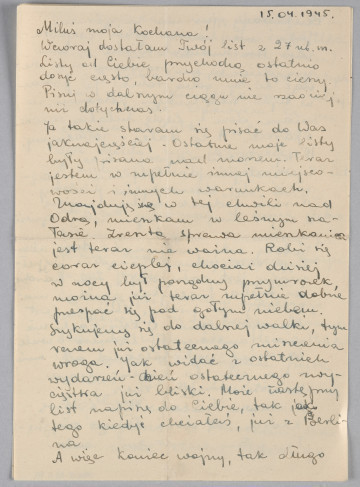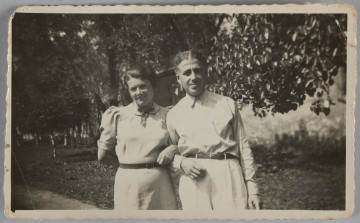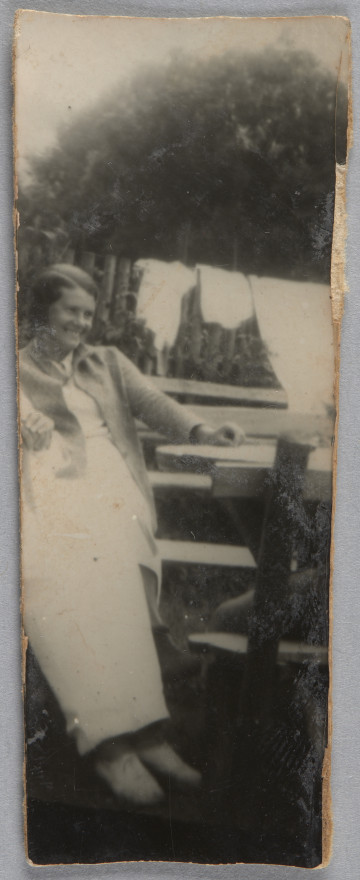
A letter
1945
Museum of the history of Polish Jews
Part of the collection: Selected objects with the motif of the Star of David
The besamim box (from Hebrew hadas besamim, Yiddish psomim biksl) is a donation from Marcjanna Szyda.
It is a container for aromatic herbs, used both at home and in the synagogue during the Havdalah ceremony – the prayer ending the Shabbat, symbolically separating the Shabbat time from the weekday. To read more about the customs related to the Shabbat, visit the Virtual Shtetl site (https://sztetl.org.pl/en/glossary/shabbat).
This custom dates back to the times when sacrifices, including incense, were offered in the Temple in Jerusalem. Its aroma is said to have been so intense that it could be smelled even in Jericho. It was believed humming a certain melody while grinding spices contributed to the improvement of the quality of incense. The most commonly used spices were cloves, ginger, allspice with myrtle, rose petals. Their scent was to revive and console an ordinary soul, abandoned after the Shabbat by its companion, the "neshamah yeterah", an additional soul that enters every Jew for the Shabbat.
The Polish name "balsaminka" may come from the metaphorical naming of the Torah, considered a "balm" for the soul. The besamim box comes from 1942. It is a silver container in the form of a round turret covered with a small dome, decorated with a palmette ornament and topped with the Star of David. The surface of the container is decorated with an ornament in the form of four cartouches. In the central part, there is a small, hinged door with a lock. Openwork areas resemble an auricular-style ornament. The whole structure is mounted on a round foot, tapered upwards, decorated with a motif of flowers and shells. The popularity of turret-shaped besamim boxes may likely be attributed to numerous biblical metaphors (incl. 2 Samuel 22:51; Proverbs 18:10; Psalms 61:4) in which God is compared to a fortress or a protective tower.
Besamim boxes was first mentioned in the 12th century. Their Hebrew name consists partly of the word "myrtle", which was used as a Havdalah fragrance in bygone times. It was probably related to Isaiah's prophecy concerning the last days (Isaiah 55:13), in which the myrtle – along with the Shabbat (Exodus 31:13-18) – are mentioned as an eternal sign.
Natalia Różańska
Author / creator
Dimensions
cały obiekt: height: 6 cm, width: 12,5 cm
Object type
vessel (container)
Technique
underglaze paints, glazing, burning, mold imprint
Material
enamel, porcelain, paint
Creation time / dating
Creation / finding place
Owner
POLIN Museum of the History of Polish Jews
Identification number
Location / status

1945
Museum of the history of Polish Jews

1937
Museum of the history of Polish Jews

1936
Museum of the history of Polish Jews
DISCOVER this TOPIC
National Museum in Lublin
DISCOVER this PATH
Educational path